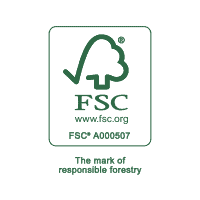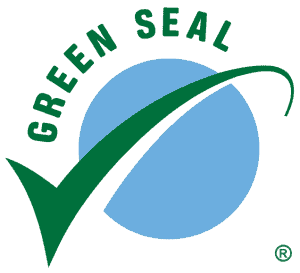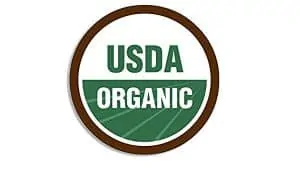Green product
Courtesy : www.feedough.com
A green product is a sustainable product designed to minimize its environmental impacts during its whole life-cycle and even after it’s of no use.
Green products are usually identified by having two basic goals – reducing waste and maximizing resource efficiency. They are manufactured using toxic-free ingredients and environmentally-friendly procedures and are certified by recognized organizations like Energy star, Forest Stewardship Council, etc.
Some of the characteristics of a green product are:
- Grown without the use of toxic chemicals and within hygienic conditions
- Can be recycled, reused and is biodegradable in nature
- Comes with eco-friendly packing
- Uses the least resources
- Is eco-efficient
- Has reduced or zero carbon footprint
- Has reduced or zero plastic footprint
In the usual scenario, brands producing green products use green marketing to communicate their value proposition to the market.
Advantages Of Green Products
Advantages Of Going Green To The Brands
- Access To New Markets: Developing green products opens the doors to an all-new market of green consumers who buy only green products and even pay more for the same.
- Competitive Advantage: It’s a proven fact that going green is a big competitive advantage in the market right now.
- Positive Public Image: When a brand does something for the society and the environment, its brand image automatically enhances.
- Brand Loyalty: Green companies automatically gain a set of loyal green customers who prefer green products over conventional non-environmental friendly products.
Advantages Of Going Green To The Customers
- Cost-effective products: Green products last longer than conventional products. Moreover, these products consume less energy and other resources thus reducing the bills of the users. For example, Solar speakers can last for 10 hours just by charging with solar energy.
- Low maintenance: If operated responsibly and maintained properly, the green products result in low maintenance costs. Take green buildings, for example. They market themselves not only for being environmentally friendly but also for less operational costs.
- Improves health: Since eco-friendly products are made from materials that are free from harmful chemicals and components, they not only improve physical but also mental health. In green buildings, large windows are installed which allows healthy and fresh air along with natural lighting in abundance. It improves mental health and reduces stress.
Advantages Of Going Green To The Society
- Generate More Jobs: According to a study by IRENA (International Renewable Energy Agency), the renewable energy industry has created almost 5 lakh new jobs opportunity in 2017, an increase of 5.3% than 2016. It is predicted that if the demands of green products continue to grow, the number will rise to 16 million by 2030. Thus, with the development of green products not only the environmental but also the economic conditions are improving.
- Prevents overuse of resources: Green products reduce the threat of overuse of resources and fossil fuels and encourages the generation of energy using natural resources.
- Protects the environment: Green products are made from organic and biodegradable materials and are designed to use least non-renewable resources and toxic chemicals to produce energy. This reduces the generation of greenhouse gases like CFCs, Ozone, methane etc. and hence prevents pollution and deterioration of climatic
Challenges Green Products Face
- Costly Products: Green products require innovation and a lot of investment. This increases the cost of developing the products, which results in making them a bit costly than the available alternatives in the market. The cost factor usually discourages the consumers in buying them.
- Ignorance: The common masses are still ignorant about the importance and benefits of going green.
- Investment: Green products requires the development of new technologies. This requires a large investment in research and development (R&D). Not every company or startup can afford to spend this amount.
Examples Of Green Products
Tesla Electric Cars
In an era when the transport industry failed to reduce its carbon footprint significantly, Tesla came out as the poster child of electric cars revolution. Unlike conventional cars, electric cars (EVs) produced by Tesla had highly efficient electric motors which run on clean energy.
The company has a loyal customer base and a market share of 2% in the US automotive market. Even though it’s a green product the demand is much higher than the supply.
Eco-Friendly Dishwashers
Eco-friendly dishwasher reduces the usage of energy and water to half the amount required for normal dishwasher. This green product uses less than 240 kWh per year and less than 3.2 gallons per cycle which not only benefits the environment but also helps the consumers save a lot.
Green Product Certification
Energy Star (EPA)

- Launched on: March 15, 1992
- Applicable on: Various electronic gadgets, buildings etc.
Energy star is a certification that aims at reducing energy consumption and emission of greenhouse gases thereby reducing the over usage of non-renewable resources and protecting the environment. It identifies and labels the products, buildings and electronic appliances with high energy efficiency.
Forest Stewardship Council (FSC)

- Applicable on: Forest and forest products
FSC aims at the management of the world’s forest and labels and certifies the products as eco-friendly. The management aims at keeping the air and water clean and reduces the drastic change of environment due to pollution. Their logo indicates that the forest product has come from some economically viable, environmentally suitable and socially helpful sources.
Green Seal

- Launched on: 1989
- Applicable on: Cleaning products, hotels, household products, paints and many more.
The green seal founder focuses on reducing the harmful effect of raw materials extraction, production, use and reuse of disposed of wastes. Before issuing the certificate, the organisation goes through a certain evaluation process that includes reviewing of data, labelling, marketing advertising material and onsite examination.
USDA Organic

- Launched on: 2002
- Applicable on: Food and agricultural products
USDA aims at the production of 100% organic crops and avoids fraud. They prohibit the use of synthetic chemicals ad genetically modified seeds. To guarantee pure products, they strictly maintain a separation between non-organic and organic products and undergo onsite inspection at regular intervals.




